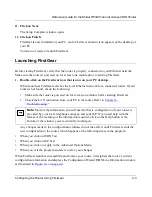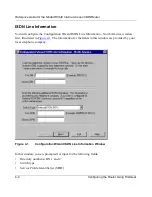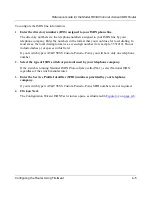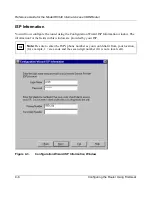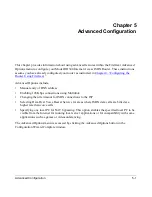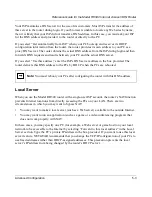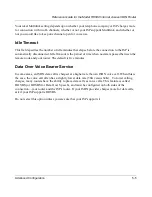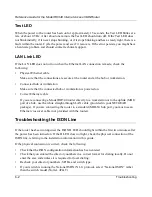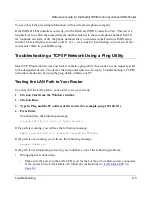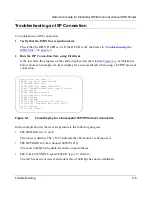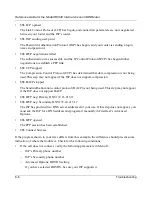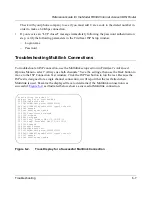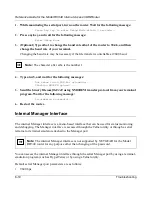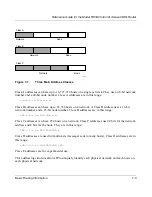
Reference Guide for the Model RH340 Internet Access ISDN Router
5-4
Advanced Configuration
Local Web Server Example
If a local PC whose address is 192.168.0.3 acts as a Web server, select “Forward to this local
address” and enter 192.168.0.3 in the box provided. In order to access this server from the
Internet, your router must be connected to the ISP (a call must be active) and you must know
the IP address that has been assigned by the ISP. If this address is 10.9.8.7, for example,
Internet users can access your Web server by directing their browsers to http://10.9.8.7. Note
that this address is valid only during the current call to the ISP. If your call drops, you may be
assigned a different IP address when you dial again.
Local Game Host or Videoconference Example
A few online games and videoconferencing applications are incompatible with NAT. The
Model RH340 router is programmed to recognize some of these applications and works
properly with them, but there are other applications that may not function well. If a local PC
with the address 192.168.0.3, for example, acts as a game or videoconference host, select
“Forward to this local address” and enter 192.168.0.3 in the box provided.
Multilink Protocol
Your ISDN line contains two bearer channels (B channels), each of which can transfer data at a
rate of 64 kilobits per second (Kbps). If both B channels dial into your ISP’s router and your ISP’s
router supports the Multilink Protocol, the two B channels can be combined for a rate of 128 Kbps.
You have three options:
•
Always use one channel.
Only one B-channel calls the ISP when a call is needed.
•
Always use both channels.
Both B-channels always call the ISP when a call is needed.
•
Add a second channel when needed.
The second channel can be added and subtracted dynamically according to traffic demand.
This option is known as Bandwidth On Demand. One B channel initially calls the ISP when a
call is needed. If the data traffic exceeds 48 Kbps for more than 10 seconds, the second
B channel calls. When the data rate drops to less than 32 Kbps for 30 seconds, the second
B channel drops. These time values are defaults, changeable using the Manager interface.

